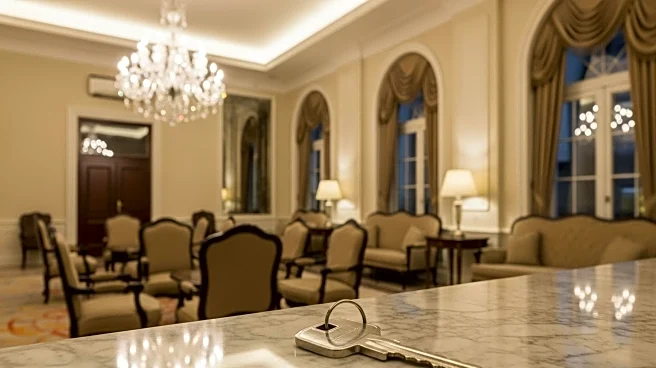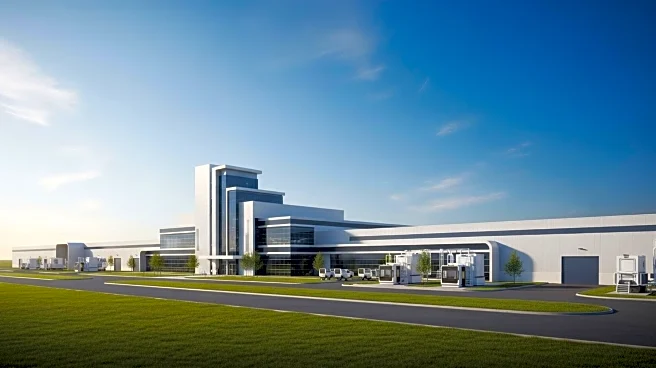What's Happening?
The U.S. hotel industry reported a downturn in key performance metrics for the week ending September 20, 2025, according to CoStar's latest data. The industry experienced a slight decrease in occupancy rates, which fell to 68.1%, representing a 1.1% decline from the same week in 2024. The average daily rate (ADR) also experienced a minor dip, decreasing by 0.3% to $168.98. Revenue per available room (RevPAR) showed a more pronounced decline of 1.4%, settling at $115.12. Among major U.S. markets, Houston experienced the largest drop in occupancy, declining by 12.3% to 60.5%, and a significant decline in RevPAR, which decreased by 20.1% to $73.89. New Orleans reported the largest decrease in ADR, dropping by 11.6% to $139.37, alongside a 22.4% decline in RevPAR, which reached $75.27. Overall, 17 of the Top 25 Markets recorded declines in occupancy, signaling a challenging period for the hotel industry.
Why It's Important?
The decline in key metrics for the U.S. hotel industry highlights ongoing challenges in the hospitality sector, which is still navigating the aftermath of the pandemic and broader economic fluctuations. The decrease in occupancy and revenue metrics could impact profitability for hotel operators, potentially leading to cost-cutting measures or reduced investment in the sector. Cities like Houston and New Orleans, which saw significant declines, may face economic repercussions, affecting local employment and tourism-related businesses. The broader implications for the U.S. economy include potential slowdowns in travel and tourism, which are critical components of economic activity in many regions.
What's Next?
As the hotel industry grapples with these declines, stakeholders may need to explore strategies to boost occupancy and revenue, such as targeted marketing campaigns or promotional offers. Industry leaders might also advocate for policy support or incentives to stimulate travel and tourism. Monitoring economic indicators and consumer confidence will be crucial in predicting future trends in the hospitality sector. Additionally, the industry may need to adapt to changing consumer preferences and technological advancements to remain competitive.












